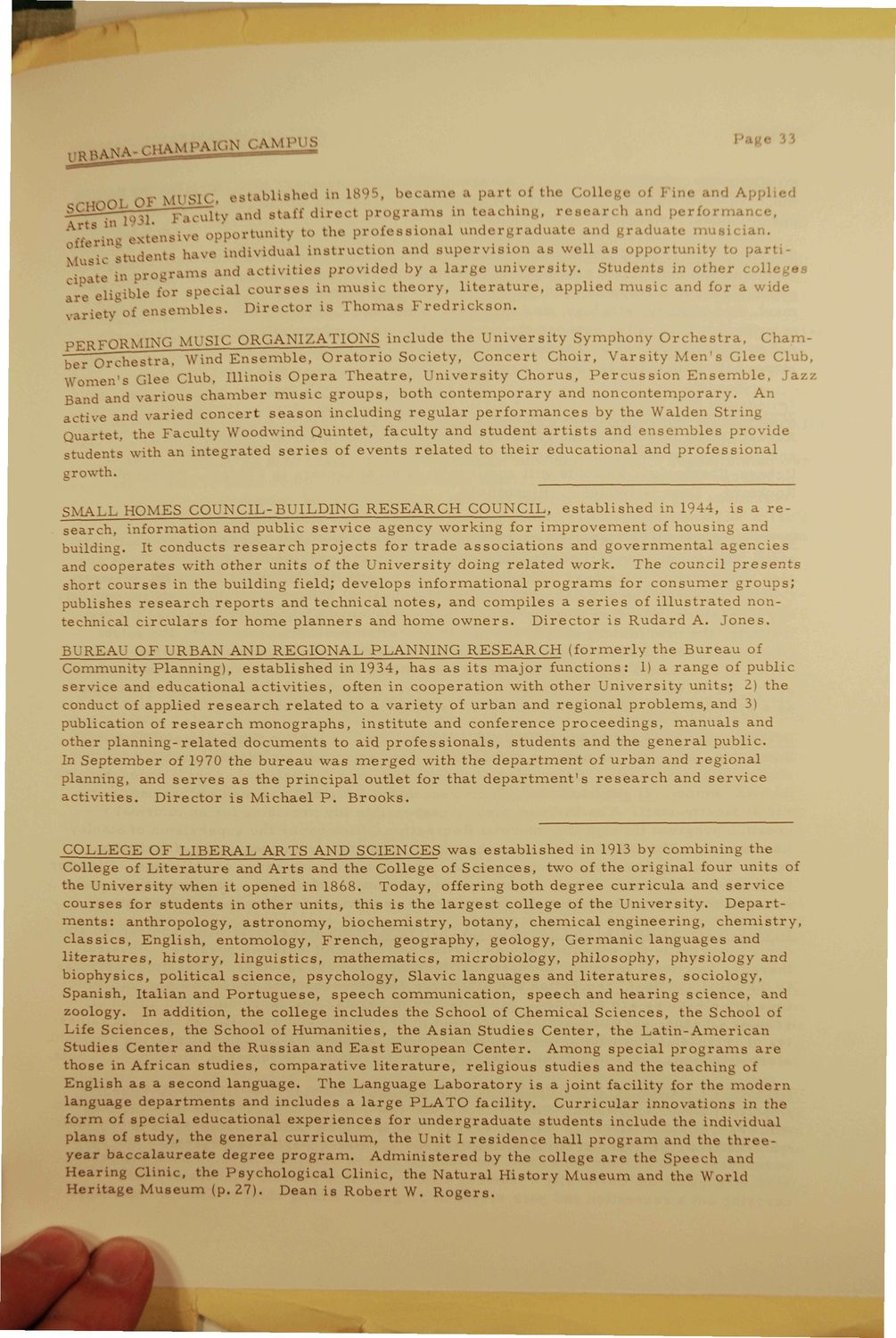| |
| |
Caption: Reference Folder - 1973
This is a reduced-resolution page image for fast online browsing.

EXTRACTED TEXT FROM PAGE:
, x V CAMPAIGN CAMPUS o s tablished Page SfHOO Arts v In 1895, became a part oi the .11. • o£ I me . d Applie d — —^ ^ itaff direct programs in teaching, research and performance, tensiv* rtunity to the professional undergraduate and graduate musi M SI( ~' l i . . . :...i;..;,ln»l inci n i r f i m i arid auiuM* v i a i o n a s Wfll . i s oDiKi r t u n i t v \(> Urirti variety of ensembles. SMALL HOMES COUNCIL-BUILDING RESEARCH COUNCIL, established in 1944, is a research, information and public service agency working for improvement of housing and building. It conducts research projects for trade associations and governmental agencies and cooperates with other units of the University doing related work. The council presents short courses in the building field; develops informational programs for consumer groups; publishes research reports and technical notes, and compiles a series of illustrated nontechnical circulars for home planners and home owners. Director is Rudard A. Jones. BUREAU OF URBAN AND REGIONAL PLANNING RESEARCH (formerly the Bureau of Community Planning), established in 1934, has as its major functions: 1) a range of public service and educational activities, often in cooperation with other University units; 2) the conduct of applied research related to a variety of urban and regional problems, and 3) publication of research monographs, institute and conference proceedings, manuals and other planning-related documents to aid professionals, students and the general public. In September of 1970 the bureau was merged with the department of urban and regional planning, and serves as the principal outlet for that department's research and service activities. Director is Michael P. Brooks. COLLEGE OF LIBERAL ARTS AND SCIENCES was established in 1913 by combining the College of Literature and Arts and the College of Sciences, two of the original four units of the University when it opened in 1868. Today, offering both degree curricula and service courses for students in other units, this is the largest college of the University. Departments: anthropology, astronomy, biochemistry, botany, chemical engineering, chemistry, classics, English, entomology, French, geography, geology, Germanic languages and literatures, history, linguistics, mathematics, microbiology, philosophy, physiology and biophysics, political science, psychology, Slavic languages and literatures, sociology, Spanish, Italian and Portuguese, speech communication, speech and hearing science, and zoology. In addition, the college includes the School of Chemical Sciences, the School of Life Sciences, the School of Humanities, the Asian Studies Center, the Latin-American Studies Center and the Russian and East European Center. Among special programs are those in African studies, comparative literature, religious studies and the teaching of English as a second language. The Language Laboratory is a joint facility for the modern language departments and includes a large PLATO facility. Curricular innovations in the form of special educational experiences for undergraduate students include the individual plans of study, the general curriculum, the Unit I residence hall program and the threeyear baccalaureate degree program. Administered by the college are the Speech and Hearing Clinic, the Psychological Clinic, the Natural History Museum and the World Heritage Museum (p. 27). Dean is Robert W. Rogers.
| |